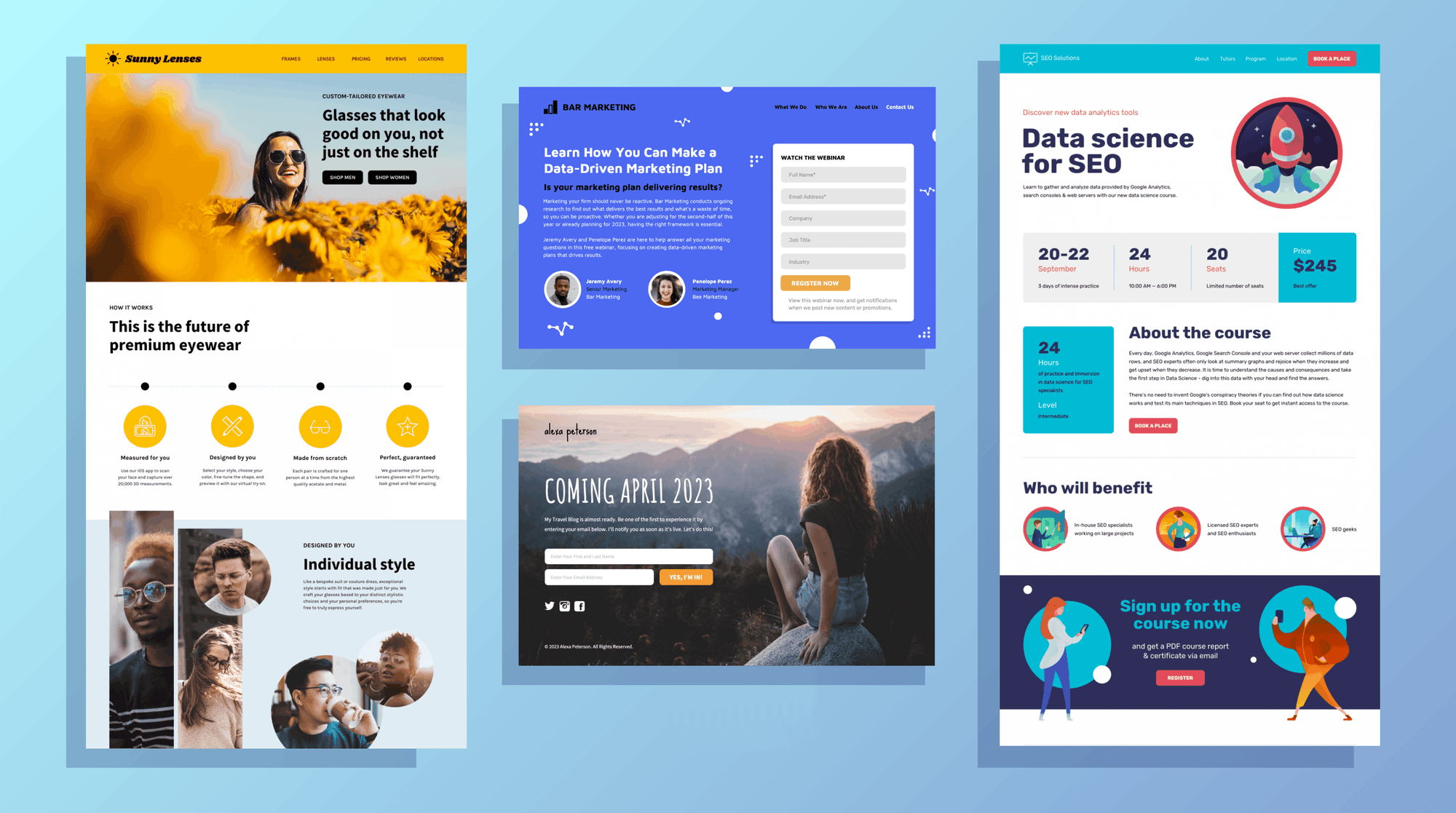A landing page is typically defined as a page that you send your audience to from an email, ad, or other digital campaign. Its goal is to encourage users take an action like signing up, or buying a product. What makes a good landing page work is its focused messaging and call-to-action.
Website pages as landing pages
A homepage cannot be a landing page since its goal is to offer many directions a user can take within the site. While a landing page focuses the user’s goal towards a single action. But other secondary pages on a website can, and maybe should, apply landing page techniques!
Each page would focus on a single idea, and at the end offer an action to take. It could still be to sign up or to make a purchase when it makes sense, but it could also just be a next step to take that’s related to the content on the page. For example, a blog post could include a newsletter sign up for visitors who may be interested in getting future updates.
Landing page mindset
There are three key benefits that you get from your pages being more like landing pages, making them more focused and goal-oriented:
- Clarity in messaging - a more narrow focus will make your content easier to digest for your audience
- Audience segmentation - you can target different needs of different people when you get more specific, making your content more relevant
- Improved search engine ranking - your content will contain keywords that are more niche and will appear higher in the long tail of search results
It also makes tracking results easier when there is a single goal to track on a page. You can see how traffic comes in and how it goes out via the call-to-action.
Speaking of call-to-action — if you want to make building your own landing pages easier, find out how our visual editor can help improve your team’s workflow.


